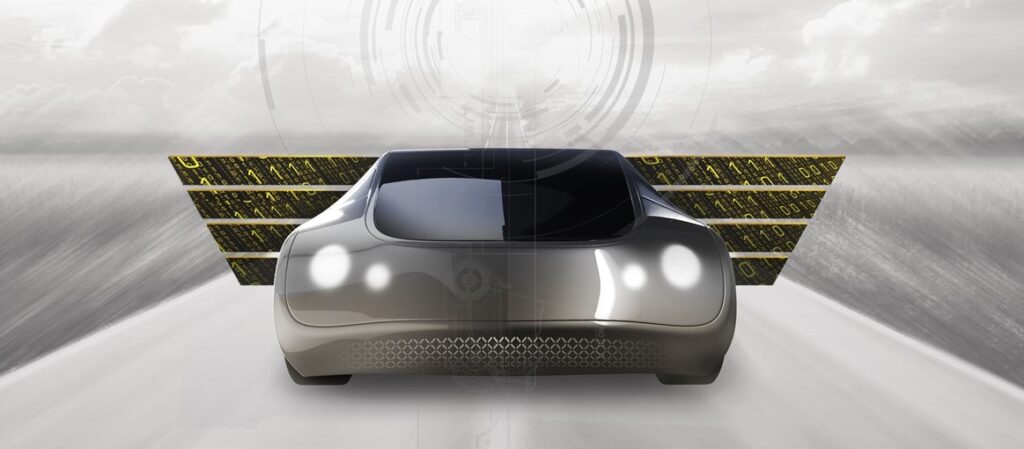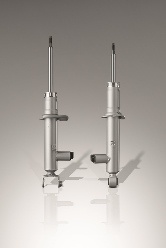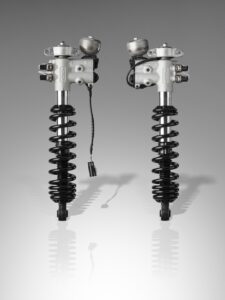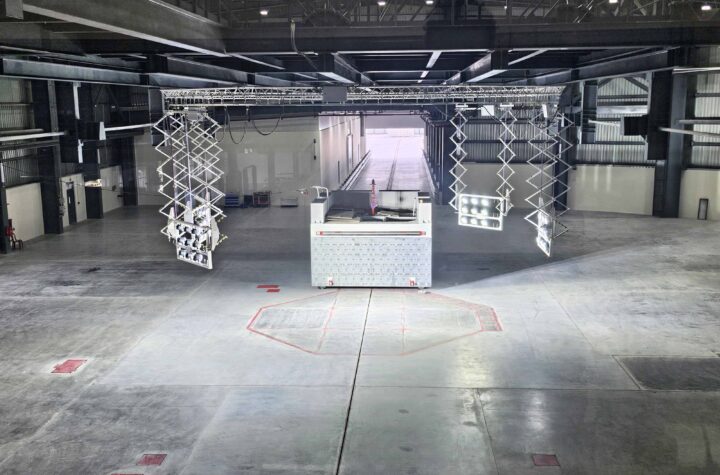
The industry’s evolution toward lighter-weight cars does not necessarily mean drivers can expect bumpier rides thanks to the increased affordability and adoption of intelligent suspension systems.
Ride quality is one of the main factors that can differentiate vehicles It uses these inputs to continuously and individually control the in the minds of consumers. In a world where all roads are certainly not damping forces of the four electronic dampers to help optimize equal, an array of intelligent suspension technologies are available to road isolation and dynamic motion. In this way, driving comfort help make every driving experience more enjoyable. Monroe Intelligent Suspension systems provide what Tenneco describes as “extra sensory suspension.”

Automotive Industries (AI) asked Henrik Johansson, Vice President and General Manager DRiV™ Advanced Suspension Technologies, how this enhances the driving experience.
Johansson: Monroe Intelligent Suspension can both sense the road conditions and driving dynamics such as acceleration, braking and steering. It uses these inputs to continuously and individually control the damping forces of the four electronic dampers to help optimize road isolation and dynamic motion. In this way, driving comfort and handling can be greatly improved compared to the same vehicle equipped with conventional shock absorbers. The driver also has the option to choose between different vehicle characteristics, so in “comfort” mode the car will provide a very balanced comfort for a relaxed drive, and in “sports” mode it will
provide a more and fun driving experience.
AI: Does the inclusion of Monroe Intelligent Suspension in the Volkswagen ID.3 electric vehicle signal the opening of a new segment for intelligent electronic
suspensions, which up to now have only been found in high-end vehicles?
Johansson: It is true that Monroe Intelligent Suspension CVSAe technology has been more widely adopted in premium vehicles, but is also found in a number of C-segment cars. The Volkswagen Golf is perhaps the best example, as it was seen by most car manufacturers as the benchmark for semi-active suspension in the C-segment. We see great potential for our technologies in electric vehicles, such as the VW ID.3. EVs are heavier than comparable ICE vehicles because of the battery. To provide the same handling characteristics for the heavier EVs, shock damping forces need to be higher when going through corners, for example. But to also provide a similar level of comfort, the suspension must also be able to quickly relax damping forces to absorb bumps in the road. A semi-active damper can do this much better than a conventional damper.
AI: These intelligent suspensions are described as “affordable” – what cost will they add to a traditional suspension?
Johansson: Technology always comes at an additional cost.Typically, the semi-active suspension technology you find on C and D segment cars is offered to customers at the same cost level as a sunroof, for example, or perhaps alloy wheels or electrically controlled tow hook options. We have learned from interactions with consumers that, once they try the adaptive suspension system and experience the incremental driving pleasure it brings, they recognize the added value of that incremental investment. This is also why we see an increase in the number of people opting to add in these types of suspensions, which is exactly the positive signal we had hoped for.
AI: What power does it use – will it impact on the range of the EV?
Johansson: The semi-active technologies use some power to control the electronic valves, but this is relatively low compared to other power consuming systems such as air conditioning, headlights and electric motors.
AI: On the more traditional, high-octane side of driving, the new Mercedes-AMG Black Series super cars will feature multi-stage adjustable Monroe Intelligent
Suspension CVSA2 electronic dampers. Why is the super car segment still important?
Johansson: The super car segment is where performance matters most, where car buyers are more aware of the suspension technology and are willing to pay for ultimate performance. The AMG Black Series managed to break the lap record on the Nürburgring in November 2020. DRiV’s CVSA2 technology helped. The technology uses two electronic valves instead of the one in CVSAe dampers for even better control of damping response. In sport mode the damper’s main tasks are to provide maximum tire-to-road contact and make the car go faster. It goes faster because the suspension helps transfer the maximum amount of power to the road surface, and the steering is made more responsive in order to make it possible to take the corners at higher speeds.











More Stories
MESSRING completes new crash test facility for Mahindra in India
ROHM Develops an Ultra-Compact MOSFET Featuring Industry-Leading* Low ON-Resistance Ideal for Fast Charging Applications
More than 30 of the top 50 global suppliers have production facilities in Turkey